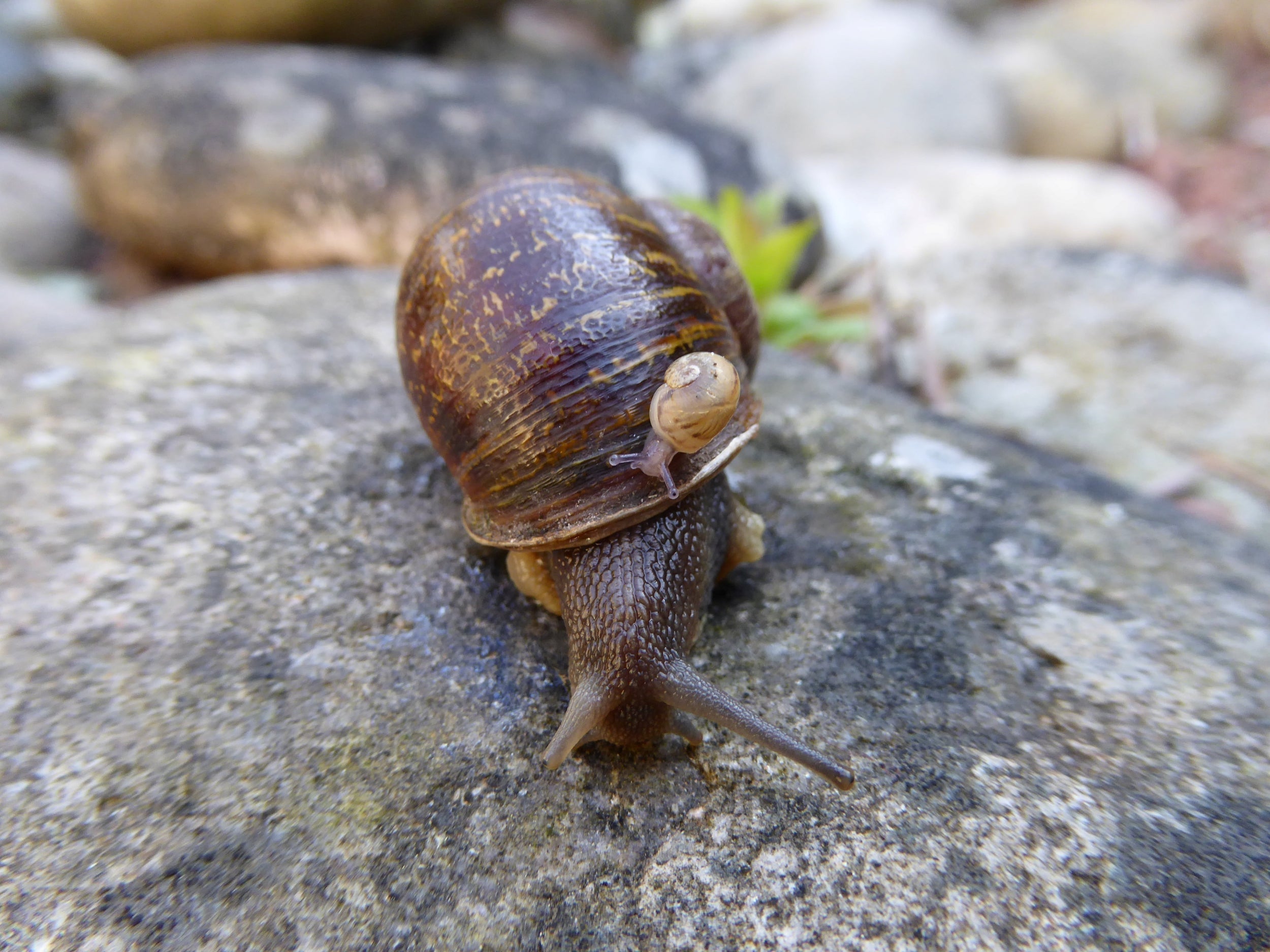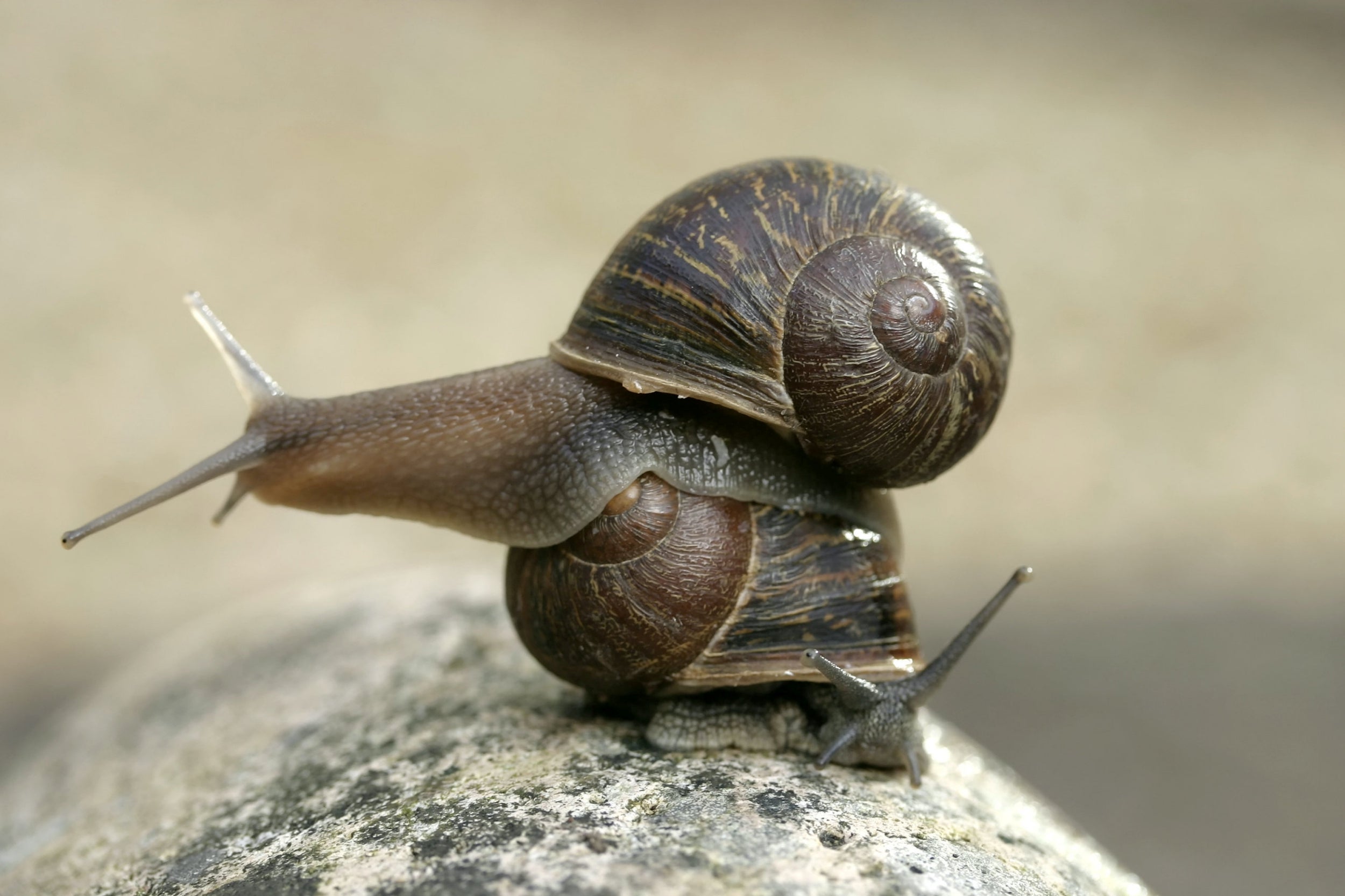‘The tale of the lonely snail’: Why it was important to find love for Jeremy the lefty snail
Jeremy’s shell, coiled to the left instead of the usual right, lead to a somewhat unconventional love story as the search for a mate captured the imaginations of many, writes Angus Davison

Your support helps us to tell the story
From reproductive rights to climate change to Big Tech, The Independent is on the ground when the story is developing. Whether it's investigating the financials of Elon Musk's pro-Trump PAC or producing our latest documentary, 'The A Word', which shines a light on the American women fighting for reproductive rights, we know how important it is to parse out the facts from the messaging.
At such a critical moment in US history, we need reporters on the ground. Your donation allows us to keep sending journalists to speak to both sides of the story.
The Independent is trusted by Americans across the entire political spectrum. And unlike many other quality news outlets, we choose not to lock Americans out of our reporting and analysis with paywalls. We believe quality journalism should be available to everyone, paid for by those who can afford it.
Your support makes all the difference.When I first started searching for a mate for a rare garden snail, I had no idea it would lead to a global media campaign, an internship at the BBC and a script for a graphic novel. Nor that it would connect me to citizen scientists around the world and the breeding of nearly 15,000 snails.
I had simply hoped that this snail whose shell coiled to the left instead of the usual right (nicknamed “Jeremy” after UK left-wing politician Jeremy Corbyn) would help communicate my previous research on the evolution and genetics of body asymmetry.
Although the scientist in me tried to remain disinterested throughout this saga, I am in the end delighted that there was a happy ending for both myself and the snail. My colleagues and I not only found a similar left-coiled snail for Jeremy to mate with, but also managed to learn from breeding the snails together that two lefts can make a right.
In work just published in Biology Letters, we showed that lefty shells in garden snails usually originate from an accident during early development, rather than an inherited condition. Jeremy’s offspring, grand-offspring and great-grand-offspring didn’t share his and his partner’s ultra-rare shell-coil.
Why did we need to find a mate for Jeremy? Although garden snails, Cornu aspersum, are hermaphrodite (both sexes at the same time), they prefer to mate with other snails. But Jeremy had not only a reverse-coiled shell but also genitals on the opposite side of the body to normal, making it very difficult to mate with most other snails.
Imagine trying to shake hands with someone who insists upon using their left hand while you use your right. It doesn’t work. A similar problem occurs in snails, which mate reciprocally in a side-by-side fashion. Mating only works if both snails have genitals on the same side of their head.
The tale of the lonely snail captured the public’s imagination – and changed my life. Jeremy’s plight crossed continents and multiple languages, taking the snail from compost heap anonymity to international “shellebrity”.
The unconventional love story (of a snail and his scientist) has even formed the basis for a graphic novel script. And my experience in the media led me to a British Science Association internship at the BBC.
A snail enthusiast and a snail farmer/restaurateur each found a lefty snail, both potential mates for Jeremy. But Jeremy was left shell-shocked after being rejected by both suitors, who seemed to prefer each other. Finally, shortly before Jeremy’s death in 2017, one mate produced a batch of 56 babies, about one-third of which were likely to be “fathered” by Jeremy.
Most snails are like us in that reversed body layouts are very rare. For example, very few humans have their heart on the right-hand side of the body as opposed to the usual left
Altogether, the publicity helped me discover more than 40 lefty snails that were found by citizen scientists, in the wild and from snail farms. Over three years, we hatched nearly 15,000 eggs from four generations of snails, including Jeremy.
These matings show that rare lefty garden snails are not usually produced due to an inherited condition, unlike in some other snails. Instead they are mainly produced by a developmental accident.
You could say that we tried to recreate what made Jeremy different, but this was not possible. Jeremy was special.

This finding has relevance to understanding the common factors that define organ and body asymmetry, including in humans, and the origin of rare reversed individuals in other animal groups.
In some snails, variation in the cell-scaffolding gene – which is also present in humans and most other animals – determines whether shells coil to the left or right. It is likely that the same set of genes are involved in the setting up of the right and left sides of both snail and human bodies. Cell-scaffolding genes may also be involved in determining behavioural handedness, including whether we write with our left or right hands.
Most snails are like us in that reversed body layouts are very rare. For example, very few humans have their heart on the right-hand side of the body as opposed to the usual left.
But a few species of snail more commonly vary in their asymmetry, yet we still don’t really know how they do it without health problems. In the long term, understanding this may help reveal why humans are nearly always invariant. That could be Jeremy’s ultimate legacy.
Angus Davison is an associate professor and reader in evolutionary genetics at the University of Nottingham.This article first appeared on The Conversation
Join our commenting forum
Join thought-provoking conversations, follow other Independent readers and see their replies
Comments